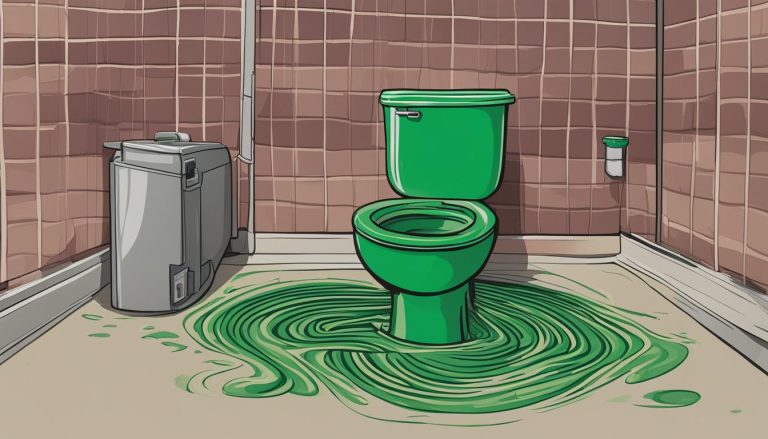RV Black Tank Cleaning: Easy Step-By-Step Guide
gorvlifestyle.com and its partners may earn a commission if you purchase a product through one of our links
Cleaning your RV’s black tank is an essential part of RV maintenance. By regularly cleaning your black tank, you can prevent unpleasant odors and ensure proper functioning of your tank sensors. There are different methods for cleaning black tanks, but using an overnight enzymatic holding tank treatment is the easiest and most effective way. It breaks down waste and eliminates buildup overnight, leaving your tank clean and odor-free. Additionally, there are other tips for maintaining your black tank, such as keeping it at least 5 gallons of water, using RV-safe toilet paper, and avoiding harsh chemicals or bleach.
Key Takeaways:
- Regularly cleaning your black tank is crucial for preventing odors and maintaining proper functionality.
- Using an overnight enzymatic holding tank treatment is the easiest and most effective way to clean your black tank.
- Keep at least 5 gallons of water in your black tank and use RV-safe toilet paper to avoid issues.
- Avoid using harsh chemicals or bleach to maintain the health of your black tank.
- Follow these tips to ensure a clean and odor-free black tank in your RV.
Tips for Maintaining RV Holding Tanks
To keep your RV holding tanks in optimal condition, it’s important to follow a few maintenance tips. By implementing these practices, you can ensure that your gray water tanks and black water tanks remain clean, function properly, and avoid any issues with your tank sensors.
Maintain Adequate Water Levels
One of the key steps in maintaining your RV holding tanks is to always keep at least 5 gallons of water in the tanks. This helps prevent buildup and drying out, as well as assists in the cleaning process. While traveling, you can swish water in the tanks to help clean the sides and prevent waste from sticking.
Manage Tank Gate Valves
Properly managing the tank gate valves is crucial for maintaining your holding tanks. Keep the gate valves closed until the tanks are more than half full. This prevents drying out and ensures enough weight to push everything out during emptying. Open the valves only when necessary, and close them immediately after emptying to avoid any odors or leaks.
Mindful Waste Management
When it comes to waste disposal, it’s important to be mindful of what goes into your RV toilets and drains. Only flush digested materials and RV-safe toilet paper down the toilet. This helps prevent blockages and reduces the risk of damaging your tank sensors. Similarly, avoid pouring greasy or solid waste down the drains, as they can cause clogs and buildup in your gray water tank.
Avoid Harsh Chemicals and Bleach
Using harsh chemicals or bleach in your RV holding tanks can be harmful. These substances can damage the tanks and their seals, leading to costly repairs. Instead, opt for RV-friendly tank treatments and cleaning products that are specifically designed for maintaining holding tanks. These products are safe to use and help break down waste and control odors effectively.
By following these tips, you can ensure the longevity and proper functioning of your RV holding tanks. Maintaining adequate water levels, managing the tank gate valves, practicing mindful waste management, and avoiding harsh chemicals are essential steps in keeping your RV’s gray water and black water tanks clean and odor-free.
The Easiest Way to Clean RV Holding Tanks
If you’re looking for a simple and effective way to clean your RV holding tanks, look no further than enzymatic tank cleaners. These specialized products are designed to break down and liquefy waste and buildup in your black and gray tanks overnight, providing a deep and thorough clean. By using an enzymatic tank treatment, you can ensure that your RV’s holding tanks are clean, odor-free, and functioning properly.
There are several reputable brands of enzymatic tank cleaners available on the market, each offering their own unique formulation and benefits. Some popular options include:
- Super Seal Pirranha
- Thetford Tank Blaster
- Walex CMDOBG Commando Black Holding Tank Cleaner
These enzymatic tank cleaners are specifically designed to target and eliminate common issues such as waste buildup, odors, and clogged sensors in your RV’s black and gray tanks. The powerful enzymes in these products work to break down and liquefy waste, making it easier to empty and ensuring that your tank sensors function accurately.
To make the most of your enzymatic tank cleaner, it’s important to follow the instructions provided with the product. Typically, this will involve filling your tanks to more than 75% capacity, emptying them in the proper order (black tank first, followed by gray tank), and using the treatment while connected to sewer services.
By incorporating an enzymatic tank cleaner into your regular RV maintenance routine, you can enjoy the benefits of a clean and odor-free environment, while also ensuring the longevity of your tank sensors.
Benefits of Enzymatic Tank Cleaners:
- Efficiently breaks down and liquefies waste
- Eliminates odors and prevents foul smells
- Promotes proper functioning of tank sensors
- Easy to use with clear instructions
- Safe for your RV’s plumbing system
Investing in quality tank cleaning products, such as enzymatic tank cleaners, is essential for RV owners who want to maintain a clean and hygienic environment while on the road. Don’t let waste buildup and odors spoil your RVing experience – choose an enzymatic tank cleaner and enjoy the convenience of a deep and effective cleaning solution.

Deep Cleaning RV Black Water Tank
Regular deep cleaning of your RV’s black water tank is essential for maintaining proper functionality and preventing unpleasant odors. It is recommended to deep clean the black tank at least twice a year. Follow these steps to effectively clean your black water tank.
Select a Bacteria-Based Cleaner
Choose a bacteria-based cleaner specifically designed for RV black water tanks, such as Clean-It. These cleaners contain enzymes and beneficial bacteria that break down waste and eliminate odor-causing bacteria.
The Deep Cleaning Process
- Start by emptying the black tank completely.
- Add the recommended amount of the bacteria-based cleaner, according to the product instructions.
- Fill the tank with water until it’s nearly full.
- Let the cleaner and water mixture sit in the tank for 12-72 hours, allowing the bacteria to work on breaking down waste and eliminating buildup.
- After the recommended time has passed, thoroughly rinse the tank by flushing it multiple times to remove any remaining debris and cleaner residue.
Remember to keep the black tank valve closed when not dumping and only open it when dumping to prevent the tank from drying out.
Maintaining a Clean Black Water Tank
In addition to regular deep cleaning, there are a few maintenance tips to keep your black water tank clean:
- Use a tank cleaning wand or external tank rinser periodically to physically remove any stubborn debris or buildup from the tank walls.
- Consider using black water tank additives to aid in preventing and breaking down solid waste and keeping the tank clean and odor-free.
- Follow proper RV tank maintenance practices, such as using RV-specific toilet paper and avoiding harsh chemicals or bleach that can damage the tank sensors and seals.
By following these steps and incorporating regular maintenance practices, you can ensure a clean and odor-free black water tank, contributing to a more enjoyable RVing experience.

Deep Cleaning RV Gray Water Tank
Deep cleaning your RV’s gray water tank is essential to prevent odors and maintain proper functionality. Follow these steps to ensure a thorough cleaning process:
- Step 1: Fill the tank with water until it is at least 2/3 full.
- Step 2: Add dish soap specially formulated to break down grease, such as Dawn Ultra.
- Step 3: Let the dish soap sit in the tank overnight to allow it to break down grease and soap scum.
- Step 4: Empty the tank by opening the valve and drain it completely.
- Step 5: Thoroughly rinse the tank with clean water to remove any remaining residue.
To prevent solid waste from entering the gray water tank, it is recommended to regularly use a sink strainer and wipe grease and debris off dishes before washing them.
The frequency of deep cleaning the gray water tank depends on the type of camping you do. For hookup campers, deep cleaning biannually should be sufficient. However, for boondockers, it is advisable to clean the gray water tank after every camping trip to avoid grease buildup.
Deep Cleaning RV Black/Gray Water Combo Tank
Cleaning a combo tank that is used for both black and gray water requires following the steps for cleaning both the black water and gray water tanks. If you primarily use the combo tank as a black water tank, you should follow the steps for deep cleaning the black water tank. On the other hand, if you primarily use it as a gray water or galley tank, you should follow the steps for deep cleaning the gray water tank.
Adapting the cleaning process based on your specific tank usage is important to ensure proper maintenance and prevent odors and buildup. Regularly monitoring the tank’s condition and adjusting the cleaning frequency as needed is highly recommended in order to keep the combo tank in optimal condition.
By following the appropriate cleaning steps and maintaining a regular cleaning schedule, you can ensure that your combo tank remains clean and free from odors. Keeping your tank well-maintained will not only improve the overall functionality of your RV’s plumbing system, but it will also provide a more pleasant experience while traveling.
FAQ
How often should I clean my RV’s black tank?
It is recommended to clean your RV’s black tank at least once a month to prevent odors and ensure proper functioning.
What is the best way to clean the black tank in an RV?
The easiest and most effective way to clean your RV’s black tank is by using an overnight enzymatic holding tank treatment. This breaks down waste and eliminates buildup overnight, leaving your tank clean and odor-free.
How much water should I keep in my black tank?
It is important to keep at least 5 gallons of water in your black tank to prevent buildup and drying out.
Can I use regular toilet paper in my RV’s black tank?
No, it is recommended to use RV-safe toilet paper to avoid clogging your black tank.
Should I use harsh chemicals or bleach to clean my black tank?
No, harsh chemicals or bleach can damage your black tank and its seals. It is best to avoid using them and opt for enzymatic tank cleaners instead.
How often should I deep clean my black water tank?
It is recommended to deep clean your black water tank at least twice a year to ensure proper functionality and avoid odors.
What products can I use to deep clean my black water tank?
You can use bacteria-based cleaners like Clean-It to deep clean your black water tank. Additionally, regularly using a tank cleaning wand or external tank rinser can help maintain its cleanliness.
How can I prevent odors in my gray water tank?
To prevent odors in your gray water tank, regularly deep clean it using grease-eating dish soap like Dawn Ultra. Additionally, using a sink strainer and wiping grease and debris off dishes before washing can help prevent solid waste from entering the tank.
How often should I deep clean my gray water tank?
Hookup campers can deep clean their gray water tanks biannually, while boondockers should clean them after every camping trip to avoid grease buildup.
How do I clean a combo tank used for black and gray water?
If you primarily use the combo tank as a black water tank, follow the steps for deep cleaning the black water tank. If you primarily use it as a gray water or galley tank, follow the steps for deep cleaning the gray water tank. Adapt the cleaning process based on your usage to ensure proper maintenance and prevention of odors and buildup.






